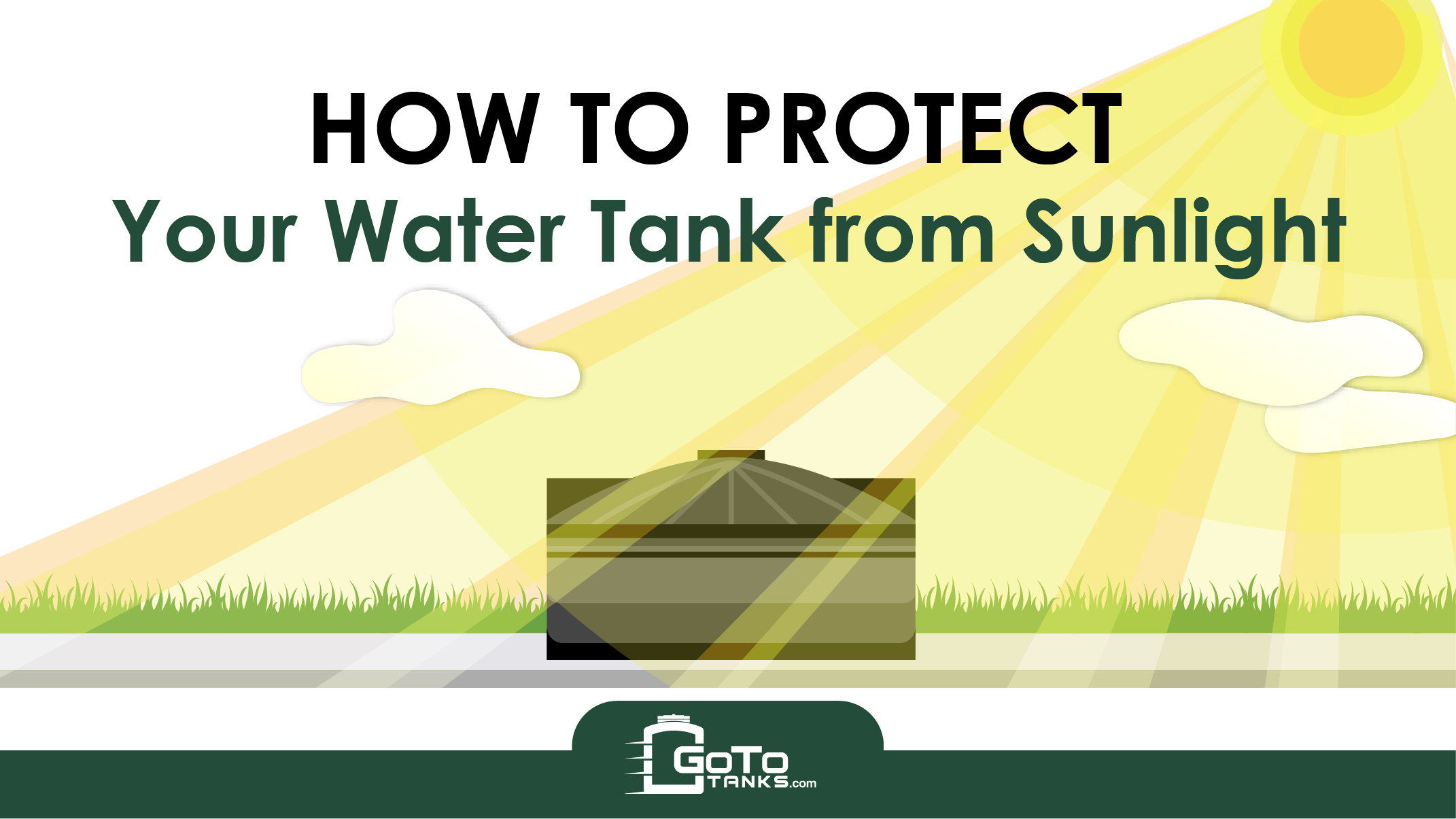
Sunlight, in the form of ultraviolet (UV) radiation, may be a great disinfectant, but the same power that kills bacteria can also break down plastic. That makes sunlight a force to be reckoned with if you’re planning to install an above-ground polyethylene water storage tank. UV radiation destabilizes polyethylene at the molecular level. This can cause microscopic cracks in the tank walls, which, over time, create leaks and breaches that are difficult (and expensive) to repair.
One way to protect a water tank from UV radiation is fairly intuitive, especially to anyone who has ever spent too much time in the sun: Limit your exposure. Erect shelters, bury the tank, install it indoors. Those are all effective methods, but keep in mind: Even shade carries ultraviolet light.
Here are a few more less intuitive, more scientific options for protecting your water tank from sunlight:
If, however, you do decide to go the paint route, make sure you get one that can expand and contract without causing cracks or hairline fractures. Acrylic is a good choice for that reason. Some manufacturers recommend urethane car paint, which is often used to paint vehicle bumpers and can also withstand significant expansion and contraction. The most heavy-duty option would be elastomeric paint, which is significantly thicker than conventional paint. In addition to being thick, elastomeric paints are extremely flexible. They can deliver strong UV resistance, as well as protection from moisture and wide temperature swings. The drawback is that it is a lot more expensive than regular paint.
In most cases it’s best to employ a combination of protective measures. Ultraviolet light is everywhere, even in the shade, so while a shelter can help prolong the life of your tank, it may not be enough, especially if you live in a desert climate or a state like Arizona or California. In addition to what you build or install around the tank, you should consider where on a given property you will place it.
You should do everything in your power to limit the amount of UV exposure your plastic tank receives. The more ultraviolet radiation it gets the shorter the lifespan it will have. Shelters can help limit direct UV exposure, as can the amount of shade a tank receives in a given day from trees, buildings, and other sources.
It’s worth thinking about the geographic region of the tank as well. Southern states, for example, receive more intense and prolonged sunlight than northern states. If you can shield the tank with a roof, great—but even shade and indirect sunlight receive UV radiation.
Another solution is to bury the tank underground. Above-ground tanks are cheaper to install and maintain, but they require a variety of protective measures to keep the forces of nature at bay. Below-ground tanks hold lower temperatures, make more efficient use of space, and are easier to protect from the elements. But they’re very expensive to install and maintain. Often the decision between the two will come down to environmental considerations: How great is this risk of bad weather, vandalism, theft, and UV exposure and how much financial leeway do you have in minimizing those risks?

By now it should be clear how sunlight weathers polyethylene plastic and what you can do to stave off that process. It’s important to keep these tips in mind when performing basic maintenance tasks. For example, how often you refill or clean the tank also determines the tank’s longevity. Sediment buildup is inevitable, especially for tanks that routinely cycle through water. But the amount of sediment that builds up before the tank is cleaned or pumped can affect the tank’s lifespan, weakening or eroding the plastic wherever it settles.
There’s another trade-off between sunlight and UV protection, and that’s in the growth of algae and bacteria: The more your tank is protected from sunlight, the more often you’ll need to clean and disinfect the interior.
While lighter colored tanks admit more sunlight and prematurely age the plastic in the tank, that light also helps to disinfect the water inside. Darker, more insulated tanks protect the plastic but also provide a more fertile breeding ground for microbial life, increasing the risk of contamination. In most cases, algae and microbial contamination is a greater, more immediate risk than the structural integrity of the tank itself. Whether to get a lighter or darker colored tank depends on individual and environmental factors. Either way, it underscores the importance of routine cleaning in addition to UV protection. The more your tank is protected from sunlight the more often you’ll need to clean and disinfect the interior.
Go To Tanks has a large selection of tanks in a number of different sizes, styles, and colors. From water storage to septic systems, Go To Tanks can be installed above or below ground, and always with some level of UV stabilization and protection. Our linear, high-density polyethylene resins can resist cracks and weather significant environmental stress. Such protection allows the tank to withstand years of direct sun exposure.
Again, though, every tank needs to be situated and protected according to its environment. The more you do to protect the tank—be it painting, insulating, or building a shelter over it—the longer your tank will last before it needs repairs.
Call 1-877-468-2657 and we’ll help you find a tank that fits your needs.